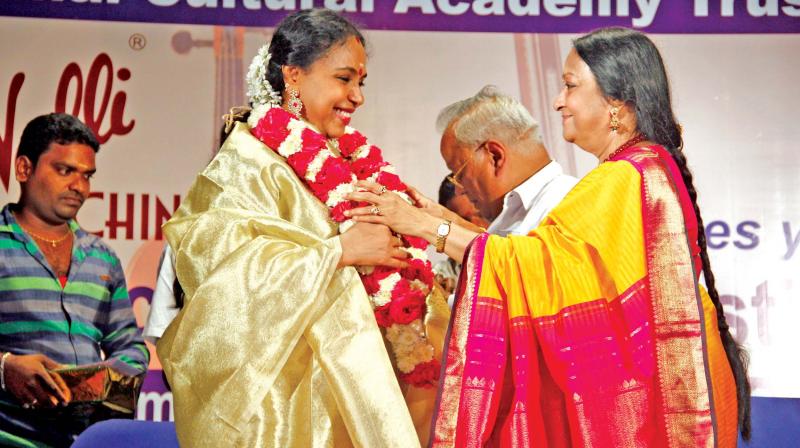Margazhi melodies: Veena, the hallowed instrument

Among the innumerable musical instruments of the world, the Indian Veena, stands as an instrument, with a hoary past, harking back to the Rig Veda age, (3500 - 2500 B.C.).
Certainly, it occupied the first place in the list of ancient instruments, Veena, Venu and Mridangam. It is interesting to note that the shape of the primitive Veena, was curved like the body of the bamboo bow.
It is also revealing that in the Vedic literature, different kinds of veena have been mentioned, and most of the post, Sangeetha Rathanakara writers, on music, have described the characteristics of different kinds of veena in their works.
Music lovers in South India should be interested to know that the Kudimiyan Malai inscription near Pudukottai mentions the Sapta Thanthri (seven strings) Veena, during the Pallava Kingdom.
The Indian Veena has always been considered, as an instrument of the Gods, hence the name ‘Divine Instrument’. The flute is inseparably connected with Lord Krishna and the Mridangam, is associated with Brahma, Nandhi and even Vishnu, the Veena is stated to be a companion of Saraswathi, Narada and Shiva. In fact, the very name of our veena is ‘Saraswathi Veena’.
Lord Shiva is also depicted as being fond of veena music. He is described as Veena Vadana Loludu by Thyagaraja in his song Mokshamu Galada. In this aspect, Shiva is known as Veena Dakshinamoorthy. Divine Sage Narada’s veena was known as Mahati.
It is said, it is not enough, if one knows merely to play the veena, he should also know the secrets of the instrument and how it responds to a devoted votary. The question arises now, is there any difference between veena and yazh, which were two different instruments. Tamil literature is full of references to veena and yazh.
Manickavasagar speaks of veena players and yazh players, sitting on different sides of a hall. A verse starts with the words Masil veenaiyum, maalai madiyamum. However, Silapathikaram concentrates on the yazh, the instrument played by Madhavi.
It is interesting to note that there was a royal patronage for veena. Samudra Gupta of the Gupta monarchy was a veena exponent and the Pallava Kings were also veena players. From Bharatha Muni down to Subburama Dikshitar, we find the music theory is explained with the aid of a veena, the reason being that the musical phenomena like Sruthi and Gamakas cannot be explained with the help of wind instruments like flute or nadaswaram.
In earlier years, all important aspects of Carnatic Music like Swarasthanas, Thala Nirnayas, playing technique and Raga Lakshanas were explained through the medium of veena alone.
It is a well-known fact that Dikshitar was a great votary of the veena and was a Vainika-Gayaka, so also his two brothers were also the great exponents of music. The 20th century produced many illustrious maestros from different parts of South India like Vijayanagaram, Mysore, Tanjore and Travancore who developed their own styles of play.
It is very evident that the unique musical instrument of the history, veena, which traverses many centuries from Rig Vedic period to the present day, it is perennial and celestial. Naturally, the veena is the instrument par excellence of the Indian music and a true symbol of Indian culture.
(The writer is a well known music critic who has won awards both in India and abroad for propagation of classical arts and music)

